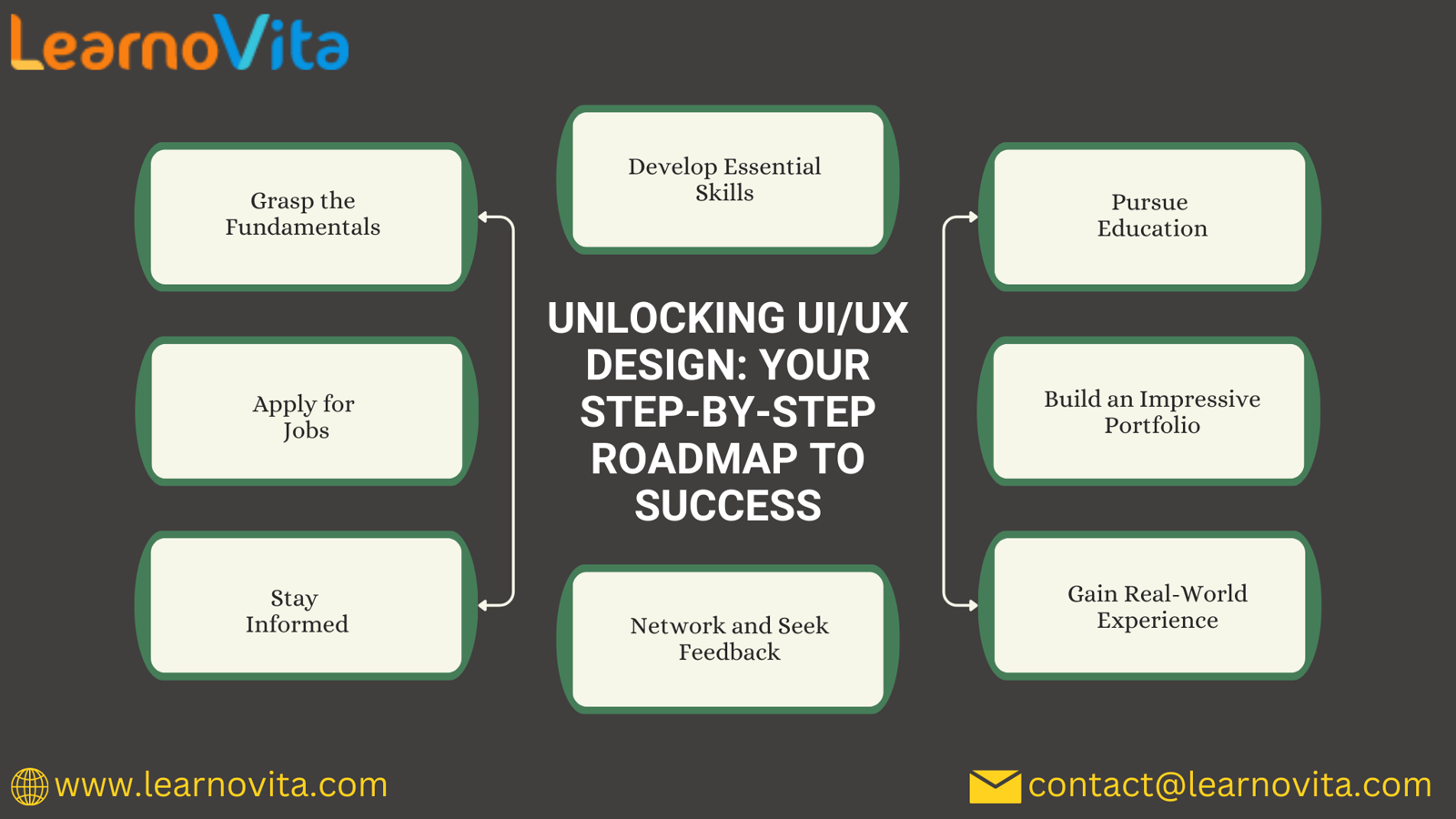From Novice to Pro: A Step-by-Step Journey in UI/UX Design

Step 1: Grasp the Basics of UI/UX
Understanding UI and UX
- UI (User Interface): This focuses on the visual elements of a product—think buttons, icons, and overall layout. A strong UI enhances usability and aesthetic appeal.
- UX (User Experience): This encompasses the overall experience a user has with a product, emphasizing usability, accessibility, and satisfaction.
Key Terms to Know
Familiarize yourself with essential concepts such as wireframes, prototypes, user personas, and usability testing. These terms will be crucial as you delve deeper into the field.
Step 2: Build Foundational Skills
Learn Design Tools
Proficiency in industry-standard design tools is vital. Consider mastering:
- Figma: Perfect for collaborative design and prototyping.
- Adobe XD: Comprehensive for UI design and prototyping tasks.
- Sketch: A favorite among UI designers for its intuitive interface.
Develop Core Competencies
Focus on honing these essential skills:
- Visual Design: Understand color theory, typography, and layout principles to create visually appealing designs.
- Interaction Design: Learn how to craft intuitive user interactions that enhance the user experience.
- Research Skills: Gain experience in conducting user interviews, surveys, and usability testing to inform your design decisions.
Step 3: Pursue Education
Formal Education
While a degree in design or a related field can be beneficial, it’s not the only path. Many successful designers are self-taught or have taken alternative routes.
Online Learning Platforms
Consider enrolling in online courses from platforms like Coursera, Udemy, or Skillshare. Look for courses that provide hands-on projects to reinforce your learning.
Step 4: Create a Compelling Portfolio
Start Building Projects
Begin your portfolio by working on personal projects or redesigning existing apps and websites. Aim for a variety of styles and functionalities to showcase your versatility.
Document Your Process
Include case studies in your portfolio that detail your design process, challenges faced, and solutions implemented. This not only highlights your skills but also demonstrates your problem-solving capabilities.
Step 5: Gain Real-World Experience
Seek Internships
Look for internship opportunities to gain hands-on experience in a professional setting. Internships are invaluable for understanding the industry and building connections.
Take on Freelance Work
Consider freelancing to broaden your experience. This will help you apply your skills in various contexts and add more projects to your portfolio.

With the aid of Best Software Training Institute programs, which offer comprehensive training and job placement support to anyone looking to develop their talents, it’s easier to learn this tool and advance your career.
Step 6: Network and Seek Feedback
Engage with the Design Community
Join design forums, attend local meetups, and participate in online groups. Networking can lead to job opportunities and provide insights from experienced designers.
Accept Constructive Criticism
Share your work with peers and mentors to receive feedback. Constructive criticism is crucial for growth and refining your skills.
Step 7: Stay Updated with Trends
Follow Industry Developments
Commit to Lifelong Learning
Always seek opportunities to enhance your skills and knowledge. Attend workshops, webinars, and conferences to stay competitive in the field.
Step 8: Apply for Jobs
Tailor Your Resume
Craft a resume that highlights your skills, experience, and unique projects. Ensure your portfolio is easily accessible and showcases your best work.
Prepare for Interviews
Be ready to discuss your design process and present your projects during interviews. Practice common interview questions and prepare for design challenges that may arise.
Conclusion
Transitioning from a novice to a professional UI/UX designer is a journey filled with learning and growth. By following this step-by-step guide, you can navigate the path to success in this rewarding field. Start today, embrace each step of the process, and remember that every designer’s journey is unique—make yours a reflection of your passion and creativity!

Comments
Post a Comment